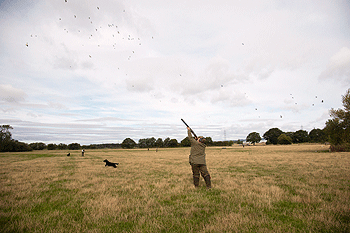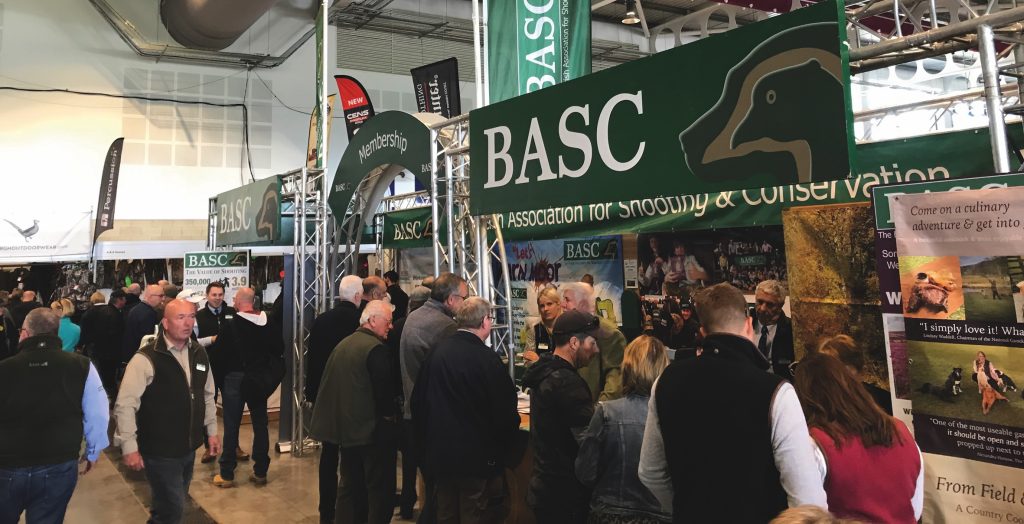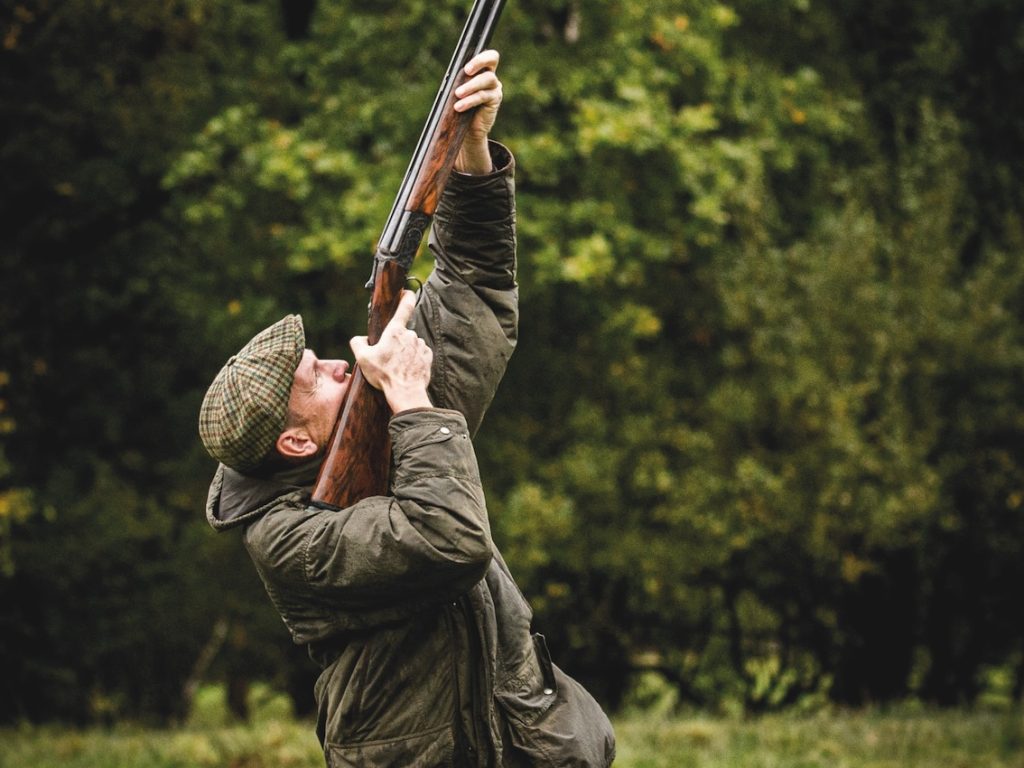Win CENS ProFlex DX5 earplugs worth £1,149 – enter here
Wild duck on the Dadbrook Shoot
Shooting wild duck in the Vale of York

Marketing is everywhere nowadays – slogans, taglines, catchy commercials telling us to do this, be that or buy the other. Even the shooting field isn’t safe from the ad people. Gone are the days when 12-bore cartridges were all red, when 4x4s had simple names, and when brands were marks on a cow’s backside. “To get ahead in this world,” they tell you, “you’ve got to be different and stand apart from the crowd. You need a unique selling point.”
Fridlington Farm, in the fertile Vale of York, certainly has a strong selling point. Few shoots can offer driven wild duck across a full day. The commercial enterprise grows vegetables and cereals, and keeps sheep and pigs, but on a warm and sunny October day the focus was on the patchwork of 30 marl ponds. Great numbers of mallard and teal, with the occasional wigeon, are drawn to this network of streams and splashes.
Before the Guns moved off towards the first pond, owner Stuart Stark gave a pep talk on what to expect. “The plan is to shoot 10 ponds today. Let’s try to keep noise to a minimum beforehand,” he said, generously circulating a slab of Gamebore Tungsten Matrix. “These are wild birds, after all. Be careful shutting doors, and we can always chat after the drive has finished. There’s no signal to start the drive, but Charlie will blow a whistle to mark the end. And please, please, gentlemen, no early pigeon. Pick up your empties and it’ll all be grand.”
Charlie Garbutt was anxious that the team reward his efforts with a good bag. Like many keepers, he doesn’t like to see his birds missed. The shoot holds two duck days before moving on to redlegs and pheasants, as the duck get canny to the threat and the opportunity passes. “You want to get into them, kid,” he told me. “Don’t be too polite. If you think you can shoot one, then have a go. I won’t give you a second chance. One pass, then the whistle goes. If I see the duck circling back, I’ll call time and we’ll move on to the next.”
Conservation winners
As we approached the first pond, a small covey of grey partridges roused themselves from a strip of linseed. This year, Stuart and Charlie were awarded the Yorkshire conservation trophy by the Game & Wildlife Conservation Trust (GWCT), following their efforts to restore this species on the farm. The grey partridge population increased last year with a number of successful broods, despite the gloomy summer, which was described by GWCT scientists as “apocalyptic”. A “right blather” was how one Gun termed it. The judges praised Fridlington “as an excellent example of what can be done on an intensively managed farming enterprise, given a good working relationship between the farming staff and the keeper”.
Stuart was delighted to receive the award, but modest about the improvements made on the farm. “I think we have stood out, as our numbers have risen slightly, while other potential contenders suffered in the poor weather,” he said. “Our winter losses were maybe nearer 20 per cent, while other shoots lost 40 to 50 per cent of their stock. Still, this is a worthy reflection of the hard work put in by Charlie, seven days a week.”
The farm has made full use of the Entry and Higher Level Stewardship Schemes, planting extensive 6m verges around watercourses with cocksfoot and clover, as well as mixes of linseed, winter barley and mustard. “Unlike the old set-aside schemes,” Stuart said, “farmers get a meaningful incentive to promote nature, because the costs are all covered. Last year, we introduced pollen and nectar mixes, to make sure the chicks have enough insects at the critical time in June, when they need to eat 2,000 insects a day. We have good length of cover, providing greater scope for territories, as the greys are competitive. With Charlie’s predator control, that probably makes the difference. But we’re waiting to see what will happen with the CAP reforms, as the stewardship schemes may change again.”
As is so often the case, the success of the shoot mirrors the dedication of the keeper. Charlie grew up on the farm, learning every inch of the terrain, usually with a shotgun or rifle within easy reach. Members of the shoot were quick to praise his brilliance at handiwork and fixing, as well as his keen eye for foxes. Thin-skinned Guns may wince at the keeper pointing out the birds they’ve missed, in no uncertain terms, so that everyone can hear. But you soon learn it’s not personal. Everyone gets the same heckling!
Busy farm
In between drives, Charlie explained what the GWCT prize meant to him. “We didn’t go looking for the recognition, but it does make me proud, because it’s not easy keepering here. This is more of a commercial farm than a shoot. Often, they’re the other way round. The greys have everything they need to survive, but they’re like you and me: they like peace and quiet. They want to be left alone. That’s not always possible on a busy farm, with the public walking through. But we do the best we can.”
On several of the morning drives, I enjoyed the company of Andrew Elliott, a seasoned duck shooter and sea fisherman, who was picking-up instead of shooting. “You’ll not often find sport like this,” he explained, as the Guns drew a semi-circle round a pond with the breeze in our faces. “We need to creep in close enough without being spotted, so the birds will split when they rise up, offering shots down the line. If we stand too far back, the duck will spot a gap and flood on through. They really are that canny.”
Andrew compared us with Captain Mainwaring’s ragtag platoon, as we edged forward to tighten the net. Meanwhile, Charlie crept up to the water’s edge with his underkeeper, Zach Forster, who is on trainee secondment from nearby Askham Bryan College. Once the trap was laid, the duck were encouraged to lift from the water in dribs and drabs. Occasionally, they would emerge in a great cloud, some 50 or 60 strong, and attract a volley of gunfire before vanishing across the fields. Usually, however, they rose in pairs or individually, creating a trickle of varying shots that would keep a troop of beaters busy in manicured covercrops. The teal, especially, tested the reactions of the Guns, jinking and flaring at speed.
Ponds with cover
The marl ponds were originally dug by hand, their clay loaded on to horse-drawn carts, either for spreading on fields or for brick-making. Today, we enjoyed the fruits of that labour. The shoot plants canary grass round the ponds, which acts as both blind and windbreak. “We’ve found it works better than a grass bank,” said Stuart, “as we don’t get the same problem with rabbits. When the water rises, and the leaves fall, we need the cover, otherwise we’d never get close.”
We passed fields of potatoes, beetroot and carrots, ready ingredients for a hearty duck soup. One pond lay in the middle of neat carrot rows, with their feathery tops brushing the bottoms of our breeches. Several fast-moving mallard tumbled down into the green sea below. After the whistle, Charlie ordered the Guns to stay still, so the pickers-up wouldn’t lose their mark on fallen birds.
Stuart and Liam Batty, father and son, are usually embers of Charlie’s beating line, but today their three cockers were mainstays of the picking-up team. A young liver, tan and white dog had little problem bounding above the carrot tops to search out hidden duck. “I’ve always preferred the bigger, stronger cockers,” Stuart said afterwards. “Both his parents are black, but they threw several tricolour puppies in this litter.”
By the time the first shadows were lengthening across the hedgerows, more than three score wild duck were hanging on a barn wall. Fridlington had proved itself a fine advertisement for sport in this part of Yorkshire. But then, what use is marketing, when the shooting is by invitation only?
Related Articles
Get the latest news delivered direct to your door
Subscribe to Shooting Times & Country
Discover the ultimate companion for field sports enthusiasts with Shooting Times & Country Magazine, the UK’s leading weekly publication that has been at the forefront of shooting culture since 1882. Subscribers gain access to expert tips, comprehensive gear reviews, seasonal advice and a vibrant community of like-minded shooters.
Save on shop price when you subscribe with weekly issues featuring in-depth articles on gundog training, exclusive member offers and access to the digital back issue library. A Shooting Times & Country subscription is more than a magazine, don’t just read about the countryside; immerse yourself in its most authoritative and engaging publication.







